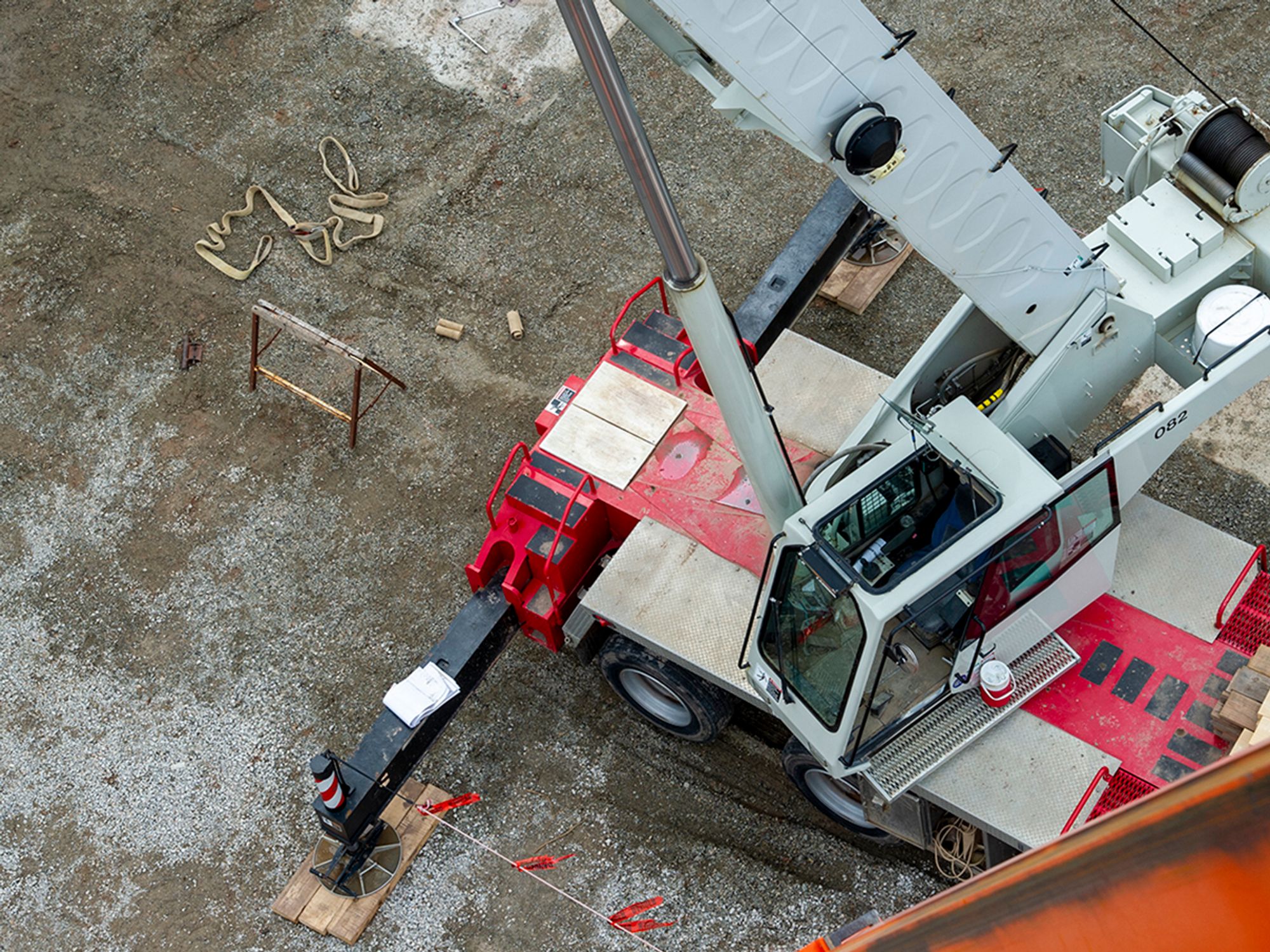Ground conditions

- Adequate ground conditions for a crane involve the ground’s slope, compaction, and firmness; if any of these is lacking, the crane might tip over.
- The job’s CE is responsible for assessing ground conditions pre-project and arranging measures to improve ground conditions as needed.
The typical construction crane can weigh many tons. Putting this weight on the ground at a construction site can lead to all sorts of problems. The most serious could be crane tip-over caused by the ground underneath the crane giving way.
The Occupational Safety & Health Association (OSHA) has determined that failure to have adequate ground conditions is a significant crane safety problem.
The term “ground conditions” is defined as the ability of the ground to support the equipment. Three key factors are involved in ground conditions:
- Slope
- Compaction
- Firmness
Adequate ground conditions are essential for safe operations because the crane’s capacity and stability depend on those conditions being present. There are two key problems regarding ground conditions:
- Equipment is often brought on-site by a subcontractor who has little control over ground conditions and lacks any knowledge of hidden hazards.
- The company that does have control over the ground conditions, and could be aware of hidden hazards, may not have the expertise to know what changes are needed to make the area suitable for safe crane operation.
Stability and support
The requirements for ensuring adequate ground support apply both when assembling a crane and during actual crane operation.
The three ground support requirements are:
- Ensure the ground is firm, drained, and graded.
- Supply enough supporting materials, if needed, to keep the crane stable. “Supporting materials” is defined as blocking, mats, cribbing, marsh buggies (in marshes/wetlands), or similar supporting materials or devices. Such materials typically help to distribute the load of the crane over a broad area and/or assist in leveling the equipment.
- Verify that the crane’s “degree of level” is met. This is the crane manufacturer’s specifications for how level the crane must be.
The responsibility for determining if the ground conditions are safe falls to the job’s controlling entity (CE). The CE is defined as an employer who is a prime contractor, general contractor, construction manager, or any other legal entity that has the overall responsibility for the project’s planning, quality, and completion.
Before any equipment is brought to the jobsite, the CE must possess and examine information (such as site drawings, as-built drawings, and soil analyses) to see if there are hazards beneath the crane setup area. If there are hazards identified in those documents, or if the CE has identified other hazards, then the CE must inform the crane user and operator of the hazards.
If the CE is not familiar with the crane or with the ground conditions at a particular jobsite, then the CE is responsible for having someone who is familiar with those requirements:
- Ensure that ground preparations necessary to meet the requirements in 1–3 above are met; and
- Inform the user and the operator of the location of hazards beneath the equipment setup area (such as voids, tanks, and utilities) if:
- Those hazards are identified in documents (such as site drawings, as-built drawings, and soil analyses) that are in the possession of the CE (whether at the site or off-site); or
- The hazards are otherwise known to that CE.
If there is no CE for the project, the ground support requirements in 1–3 above must be met by the employer who has authority at the site to make or arrange for ground preparations.
Assembly and disassembly
Before beginning assembly/disassembly (A/D), the A/D director has to determine whether ground conditions are adequate to support the equipment during that activity. If the A/D director or the operator determines that ground conditions do not meet the ground support requirements, that person’s employer must have a discussion with the CE regarding the ground preparations that are needed so that, with the use of suitable supporting materials/devices (if necessary), the ground support requirements can be met.
